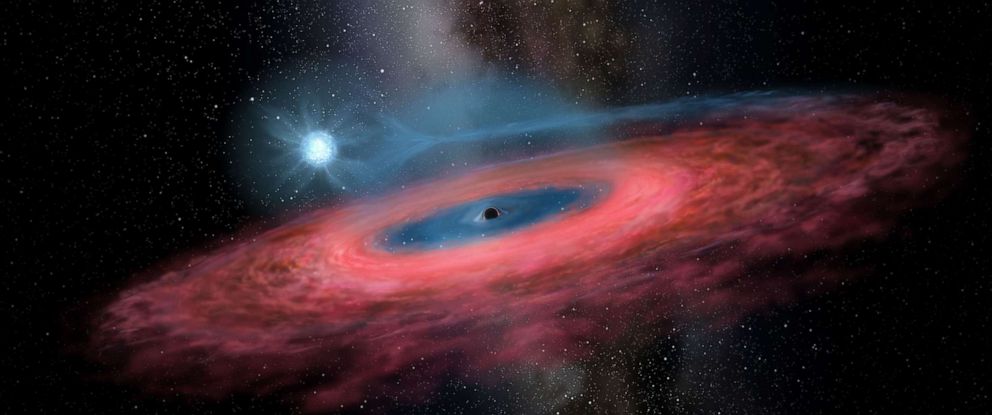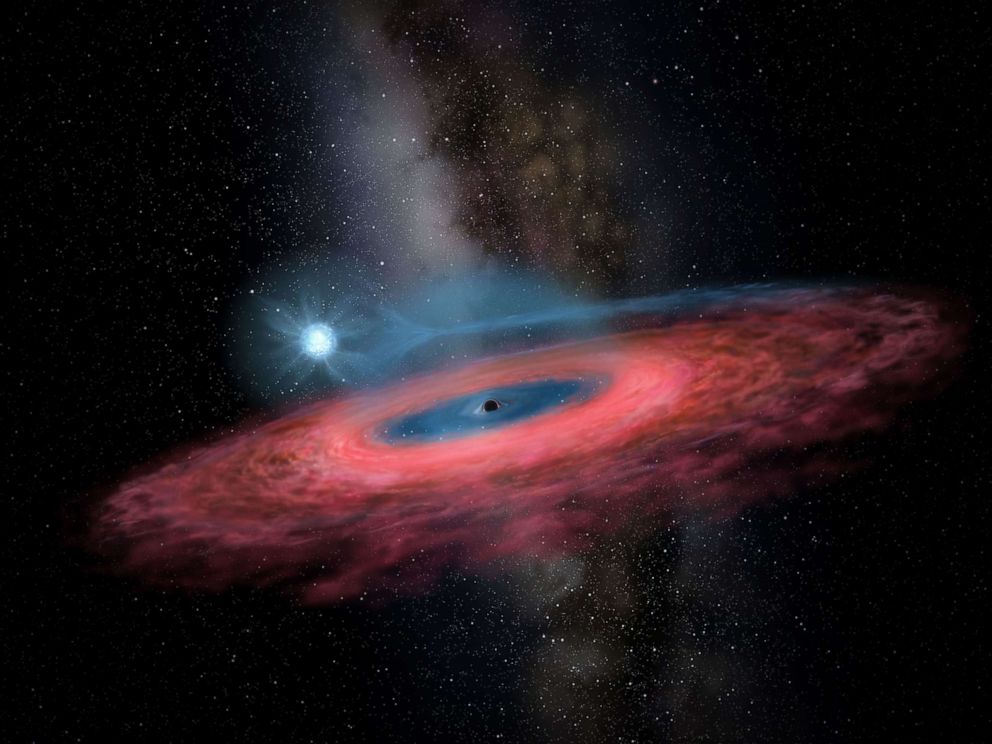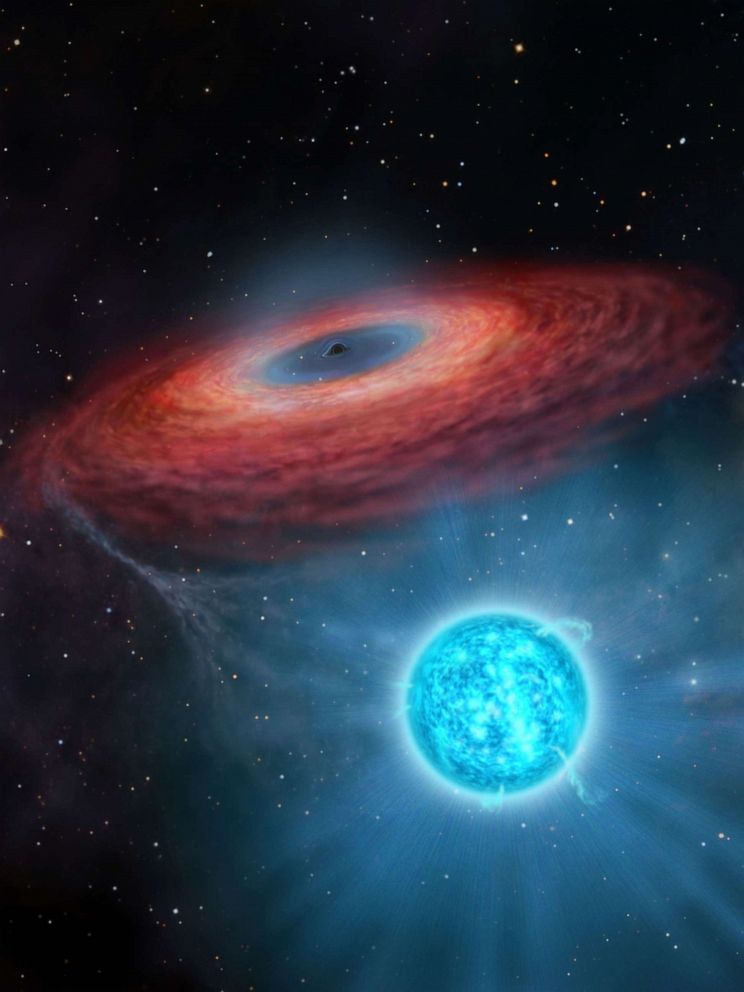
Monster black hole that is so big it 'should not even exist' was discovered
A black hole with a mass 70 times greater than the Sun was discovered, leaving scientists stunned.
Interested in NASA?
Add NASA as an interest to stay up to date on the latest NASA news, video, and analysis from ABC News. NASA Add Interest
"Black holes of such mass should not even exist in our Galaxy, according to most of the current models of stellar evolution," Professor Jifeng Liu, who led the team at the Chinese Academy of Sciences that made the discovery, said in a statement.
Scientists previously believed that the mass of an individual stellar black hole could not be more than 20 times that of the Sun. These stellar black holes are different than so-called supermassive black holes, which are found at the center of galaxies and can be billions of times the mass of our Sun.

The newly discovered black hole, named LB-1, is located 15,000 light-years from Earth, according to a press release from the Chinese Academy of Sciences.
Searching for black holes has only become possible in the last few years, thanks to recent developments in telescopes and detectors.
But even with the new technology, the academy said it is still "like looking for the proverbial needle in a haystack."

The telescope that spotted LB-1 -- Spain's 10.4-m Gran Telescopio Canarias and the 10-m Keck I telescope in the United States -- also found a star eight times heavier than the Sun that orbited the newly discovered 70-solar-mass black hole, every 79 days.
Scientists said the discovery would force them to "re-examine our models of how stellar-mass black holes form."
"This remarkable result ... really points towards a renaissance in our understanding of black hole astrophysics," David Reitze, the director of the Laser Interferometer Gravitational-Wave Observatory in Washington, said in a statement.